NIL
What we do, don’t know about Missouri NIL, house settlement future
Missouri athletic director Laird Veatch struck a relatable tone to begin a nearly half-hour-long press conference with local media to address the changes coming to college athletics. “I really have a disclaimer,” Veatch said from inside Mizzou Arena on Thursday. “And that is that this is, as you know, very much an evolving landscape. So, […]
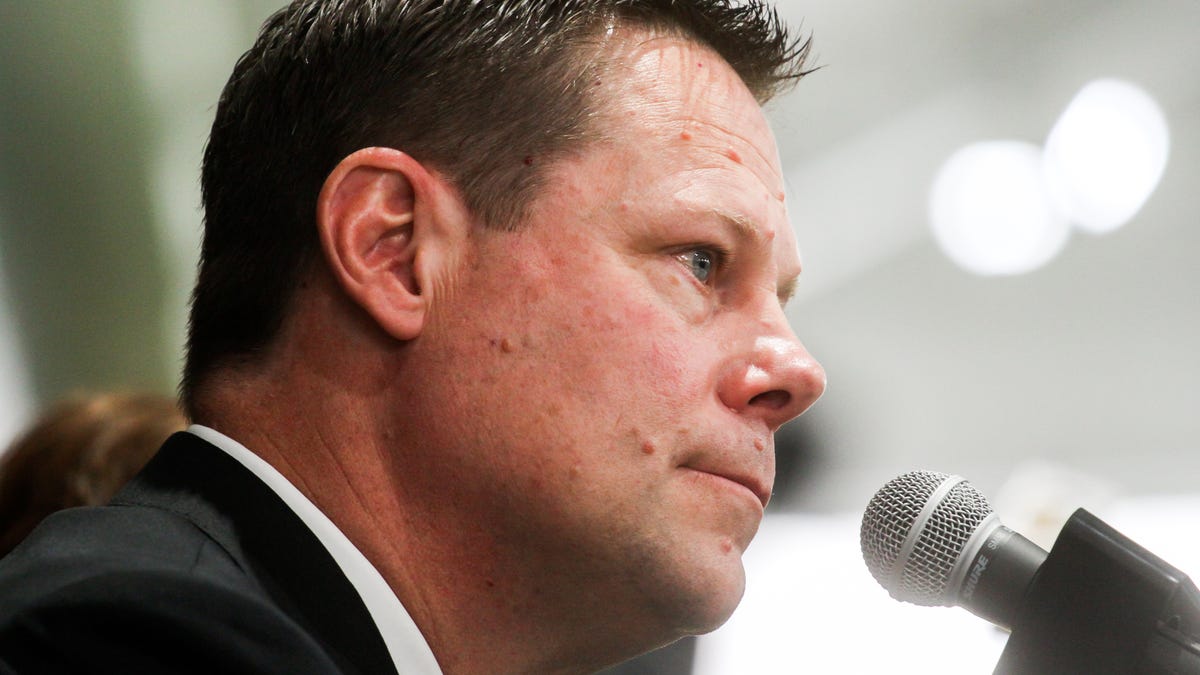
Missouri athletic director Laird Veatch struck a relatable tone to begin a nearly half-hour-long press conference with local media to address the changes coming to college athletics.
“I really have a disclaimer,” Veatch said from inside Mizzou Arena on Thursday. “And that is that this is, as you know, very much an evolving landscape. So, I don’t pretend to be the expert on everything.”
A lot has changed in college athletics this month, and that’s before the biggest waves have even reached the shore.
A new era of student-athlete compensation is set to go into effect July 1 after U.S. District Judge Claudia Wilken granted final approval June 6 to a settlement that will usher in a proposed revenue-sharing model to college athletics.
That means Missouri, like any other institution that opts into the model, will be able to share an estimated $20.5 million directly to student-athletes across this fiscal year. That number will incrementally increase each year.
That’s the foundation of the settlement, but the approval is going to bring a multitude of changes to the way players are paid, the types of deals that will be sanctioned via third-party NIL, and, of course, the way athletic departments handle the upcoming changes.
There is a lot of ground to cover, and not all of it is stable or particularly transparent.
Here’s what we do and don’t know about the way Mizzou will operate in the post-settlement era:
Do know: ‘Bulk’ of Missouri’s revenue will go to football, men’s basketball
As expected, a majority of Missouri’s delegated revenue will go to football and men’s basketball. That’s following a common pattern around the country, as the two sports that generate the most revenue will get the most to pay players.
Veatch said there will be other sports and athletes that earn revenue-sharing money, but Eli Drinkwitz and Dennis Gates’ squads are getting the lion’s share.
“The bulk of our revenue-share funds will go to football and men’s basketball, similar to the conversation you’re seeing across the country,” Veatch said. “In large part in line with how money is generated, but also the brand value that those student-athletes bring to Mizzou.”
Don’t know: How money will be distributed, who else can earn share
What we do not know, however, is exactly how much each sport will earn. Some universities have provided the percentages that will go to football, men’s basketball and other sports.
For instance, Georgia has announced they plan to mirror the house settlement’s back damage formula amounts, which, per Ross Dellenger of Yahoo, would allocate 75% to football (approx. $13.5 million), 15% to men’s basketball (approx. $2.7 million), 5% to women’s basketball (approx. $900,000) and 5% to the remainder of the sports.
Ohio State AD Ross Bjork has announced it will start by paying football, men’s basketball, women’s basketball and women’s volleyball.
But, for now, Mizzou will not be disclosing how or where exactly it allocates its money.
“I don’t feel like we’re in a position to share specific sports or specific details and amounts,” Veatch said. “And the reason for that, candidly, is because until we’re at a point where this process allows for that kind of transparency across the board of all sports, I just candidly don’t see a competitive value or a strategic incentive for us to disclose those specifics.
“I do think that will likely happen in time across the board, but until that time, I just don’t think it’s in the best interest of Mizzou.”
Do know: Scholarships are being added, with money to come out of rev-share pool
Scholarship limits have been eliminated in favor of roster limits across the board are coming as part of the settlement, meaning most sports will have fewer walk-ons. Missouri will spend about $3 million adding 60 new scholarships for the upcoming season. Seemingly, $2.5 million of that will come out of the revenue-sharing pool.
That means, like most schools, Mizzou is probably operating with approximately $18 million to pay players in revenue-sharing money in the 2025-26 fiscal cycle.
Don’t know: How ‘NIL Go’ — third-party NIL clearinghouse — will work
Revenue-sharing comes directly from the school. That’s new and will come directly from the school.
But, third-party NIL — old NIL — still exists. Third-party NIL is the method of paying players that has existed since it originated in 2021. Now, however, any NIL deals from businesses or boosters, or any other source will go through a clearinghouse review and can be approved or denied.
The power conferences have spearheaded the implementation of a ‘College Sports Commission,’ tabbing LBi Software and accounting firm Deloitte to create a clearinghouse system to review any third-party NIL deal that is greater than $600 in value. The clearinghouse will be called ‘NIL Go.’
Qualifying third-party deals will be submitted by the student-athlete to NIL Go, and a commission-created computer algorithm will determine whether those deals are legitimate or not.
Legitimate deals are meant, per the algorithm’s calculations, to be for a “valid business purpose” and be within “a reasonable range of compensation” for that particular student-athlete. Both of those are extremely open to interpretation (and probably, at some point, lawsuits).
But, until litigation happens, that’s besides the point. The clearinghouse’s main goal is to crack down on illegitimate deals.
So, what’s an example of a legitimate and likely-to-be-approved submission versus an illegitimate and unlikely-to-be-approved submission?
Well … nobody really knows. Not even Veatch, an SEC AD.
“We don’t know, again, because we haven’t gone through the process,” Veatch said. “So, I think we’ll have to learn as we go over the coming months, and as those third-party NIL deals are entered by student-athletes and they receive information and feedback, then we’ll learn with them. But until we go through that process, … we can’t speculate really any more than you can.”
Do know: How most Missouri/student-athlete contracts will be paid
Veatch said most of the revenue-sharing contracts that Missouri creates with student-athletes will include monthly payments to the player.
The AD also said that it will be possible to sign multi-year deals with an athlete.
There is no current status quo for this. Likely, universities across the country operate differently when it comes to contracts.
Don’t know: What those contracts will look like
These contracts are not expected to be public record, and universities seemingly will do their best to keep them from entering the public sphere.
That means if you want to know how much Mizzou is spending on its football team through revenue-sharing this upcoming year, you’re out of luck. Mizzou, realistically, like most institutions, will not disclose that information.
“I think we are tracking more and more toward an atmosphere where we have … that type of transparency,” Veatch said. “I don’t think we’re there yet, and in large part because we are still dealing with student-athletes, and they are young people with protections, legal protections, from some of those areas that have to be worked through, and we have to get advice on (it) before we can provide those kind of specifics.
“So, I could see that happening down the road, and maybe that’s in our future, but I think that’s one of the many, many questions that has to be answered on the legal front first.”
That also means it’s unlikely that we know exactly what the ramifications are for breaking the terms of a contract by, say, transferring after one season on a multi-year contract.
Don’t know: If any of this will work
Let’s play the hypothetical game for a moment.
What’s stopping a willing booster from filing a series of $599 payments to circumnavigate the clearinghouse threshold?
What’s stopping a university situated in a state with supremely lenient NIL legislation — Tennessee, for instance — from suing the NCAA or the clearinghouse when its rules and decisions counter what they have written in law at the state level?
What’s stopping a never-ending stream of lawsuits for any number of reasons, including but not limited to eligibility, Title IX or contract disputes?
What is binding any university to, plainly, play ball with the new rules when it may be more advantageous not to?
At present, it appears to mainly be faith, hope and wishes.
Veatch indicated that his recent meetings on the subject have shown him that coaches and administrators want to get on the same page with a uniform set of rules; that a widespread frustration with the current landscape of college athletics may bring the nation’s athletic departments together to embrace this next step.
That does, frankly, seem a little friendly for the often-cutthroat business that is college sports.
Some universities and states have gone to great lengths to circumvent upcoming changes and to create advantages for paying players. Missouri led the charge on that back in 2023, by the way.
Now, a proposed set of uniformity is coming, and the coaches who cried chaos will get the chance to play by the same set of rules.
Will it happen?
“This is only (going) to be as successful as the members decide to make it, right?” Veatch said. “And if we are committed to it and give it a chance, then that’s a starting place. Will there be lawsuits, will there be continued outside pressures? Absolutely, right? And that’s why it is a step, but it’s not the last or final step.
“It’s also why we need congressional support, why we need to have, at some level, some federal action that gives us a level of protection so we can continue to move forward with the collegiate model in a new way, in a new day. And we’ve taken an important step to move that forward, but it is only a step.”
NIL
Julian Lewis: College Football Rising Star with $100 Million NIL Ambitions
Julian Lewis, a freshman at Colorado Buffaloes, is being compared to NIL earners like Shedeur Sanders and Cooper Flagg, despite doubts about his potential. An article suggested Lewis could target $100 million in NIL earnings, but critics argue that this is unrealistic given the current landscape of college athletics. With an early NIL valuation of […]

Julian Lewis, a freshman at Colorado Buffaloes, is being compared to NIL earners like Shedeur Sanders and Cooper Flagg, despite doubts about his potential. An article suggested Lewis could target $100 million in NIL earnings, but critics argue that this is unrealistic given the current landscape of college athletics. With an early NIL valuation of $1.1 million, a successful debut season could enhance his status, yet reaching Sanders’ $6.5 million from 2024 seems improbable. The investment focus for Colorado is shifting towards developing undervalued players rather than replicating past NIL spending. Operators in the college sports sector may require a significant overhaul for Lewis to approach such lofty financial figures.
By the Numbers
- Julian Lewis currently has an NIL valuation of $1.1 million.
- Shedeur Sanders earned $6.5 million in NIL deals in 2024.
Yes, But
While ambitious projections exist for Lewis, experts highlight that reaching such figures requires monumental changes in the college sports NIL framework. Detractors emphasize that current market conditions and potential federal regulations put long-term earnings at risk.
State of Play
- Colorado is shifting its investment strategy from high NIL spending to player development.
- Current NIL deals focus on enhancing player branding rather than reaching unprecedented sums.
What’s Next
The upcoming college season will be crucial for Lewis to establish his brand and boost his NIL valuation. Observers will watch how the Buffaloes adapt their strategy to balance player development with earnings potential.
Bottom Line
While Julian Lewis may have a promising start in NIL earnings, the notion of him reaching $100 million is highly speculative. The focus must shift towards sustainable growth and development in college athletics amidst evolving regulations and market dynamics.
NIL
Power conferences best prepare teams in college football | News, Sports, Jobs
After an offseason of preoccupation with the transfer portal and NIL negotiations, coaches and players are about a month away from getting back to the real business of college football. Theoretically, the ultimate objective is still to win games. Lucrative income, draft position and promotional opportunities are all enhanced by victories, especially on the sport’s […]


After an offseason of preoccupation with the transfer portal and NIL negotiations, coaches and players are about a month away from getting back to the real business of college football.
Theoretically, the ultimate objective is still to win games. Lucrative income, draft position and promotional opportunities are all enhanced by victories, especially on the sport’s biggest stage.
For FBS teams, that stage is the College Football Playoff.
In years past, when rosters remained relatively intact and players maxed out their eligibility, it was easier to forecast the national championship contenders entering the season.
Penn State’s national championship in 1986 was the fulfillment of the promise that defined the ’85 team which was beaten by Oklahoma in the Orange Bowl title tilt.
If there is one reasonable expectation for the 2025 season, it is that the eventual champion will hail from a power conference.
The last independent to win the national championship was Miami (Fla.) in 1989. The last team from a non-power conference to win the championship was WAC member BYU in 1984.
When BYU won the title 41 years ago, the championship was determined by polls. The Cougars played only one ranked team all season — No. 3 Pitt in the opener — and completed a 13-0 season by defeating a 6-5 Michigan team in the Holiday Bowl, which was contested before Christmas.
Depending on seeding in the current playoff format, a team might be required to run a gauntlet of four games.
Could a highly ranked non-power conference team prevail over even three consecutive opponents from the Big Ten, Big 12, ACC and SEC?
Conventional wisdom says “No.”
A common criticism of Penn State’s non-conference schedule is that it does not adequately prepare the Nittany Lions for the season’s biggest challenges, which have traditionally been Michigan and Ohio State.
That same contention will be made again this season if Penn State loses to defending Big Ten champion Oregon on Sept. 27 after opening against Nevada, FIU and Villanova, all at home.
With their wealth of resources, teams such as Notre Dame, Texas, Ohio State, Michigan, PSU, Alabama and Georgia are expected to contend annually for a playoff spot.
It’s the sleepers from the power conferences such as Arizona State and Indiana that infuse the postseason with excitement and unpredictability.
However, not all CFP teams from power conferences are equally fortified.
SMU, champion of the ACC, had the look of a deer staring into the headlights of an 18-wheeler throughout the CFP first-round game at Beaver Stadium last December.
Similarly, Boise State’s No. 3 seeding and 17-point loss to the Nittany Lions in the quarterfinals strengthened the case for changing the seeding procedures.
The Broncos’ Mountain West Conference championship and three-point loss to then-No. 7 Oregon camouflaged deficiencies that a power conference schedule would have exposed.
The stakes are particularly high this season at USC, LSU and Oklahoma State where head coaches Lincoln Riley, Brian Kelly and Mike Gundy, respectively, are testing the patience of their fan bases.
LSU’s opener at Clemson already has Kelly pulling out all stops.
“We’ve circled the game, and I’ve never done that before in openers,” Kelly said. “It’s all over our weight room. It’s all over workouts. We’re wearing shirts. We’re doing the kumbaya of we’re playing Clemson, and we need to beat Clemson.”
With that sense of urgency, and top-shelf scheduling, there’s no denying that the LSU program will be all business this season.
On the field, that is.
Jim Caltagirone writes a monthly column for the Mirror.
NIL
June 28, 2025 – Bulldawg Illustrated
Jump To Top of Pag The most significant transformation in college football recruiting over the last three years has been the evolution of the NCAA Transfer Portal into a de facto free agency system, alongside the seismic shift brought on by Name, Image, and Likeness (NIL) regulations and the resulting “open bidding wars.” This continuous […]
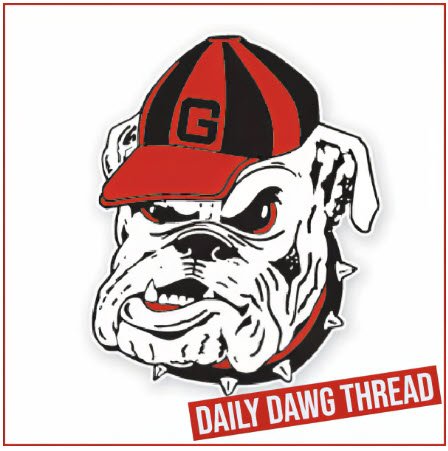
Jump To Top of Pag
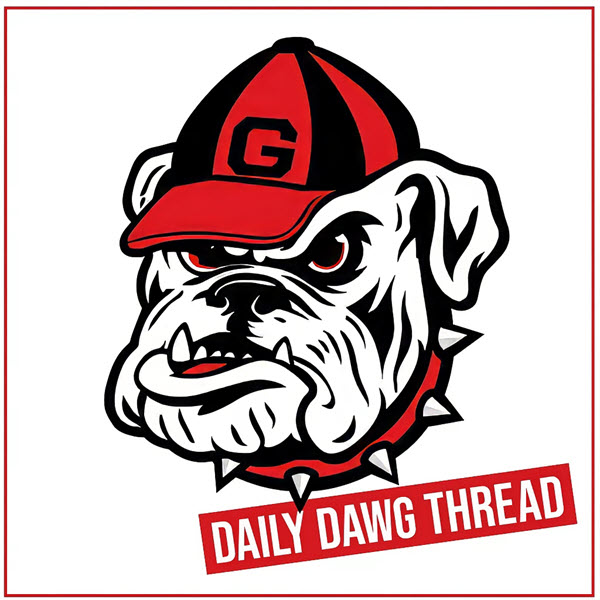

The most significant transformation in college football recruiting over the last three years has been the evolution of the NCAA Transfer Portal into a de facto free agency system, alongside the seismic shift brought on by Name, Image, and Likeness (NIL) regulations and the resulting “open bidding wars.” This continuous player movement has fundamentally altered roster construction and the timeline for competitive success. It has prompted a strategic and vocal response from the University of Georgia’s head coach, Kirby Smart, who has both adapted to and criticized the new landscape.
For UGA, a program built on elite high school recruiting and player development, the transfer portal presents both challenges and opportunities. While the Bulldogs continue to recruit top-tier talent through traditional cycles, the portal has become an undeniable force in shaping the final makeup of their roster each season.
Kirby Smart’s Two-Front Approach: Adaptation and Advocacy
Kirby Smart’s response to the rise of the transfer portal can be characterized as a two-front approach: advocating for systemic changes while privately adapting his recruiting and roster management strategies.
Publicly, Smart has emerged as one of the most vocal critics of the current transfer portal windows, particularly their timing and frequency. He has consistently argued for a consolidated and logical calendar, expressing frustration with the chaotic nature of managing a roster while players are actively entering the transfer portal during crucial periods, such as preparation for bowl games and the College Football Playoff.
“The biggest decision that has to be made in college football right now, by far… is when is the portal window, and is there one or two?” Smart said, advocating for a single, later window that would allow teams to complete their seasons before player movement begins.
However, behind the scenes, Smart and his staff have demonstrated a remarkable ability to utilize the portal to their strategic advantage. Rather than completely overhauling their roster, Georgia’s approach has been targeted and needs-based. They have sought specific positions where there is weakness or lack of depth, bringing in experienced players who can make an immediate impact. Recent acquisitions have included key players at wide receiver, defensive back, and even on the offensive line—positions where finding immediate, game-ready talent through the high school ranks can be particularly challenging.
A “Culture Fit” Philosophy and Emphasis on the Trenches
One cornerstone of Smart’s portal strategy is his strong emphasis on “culture fit.” He has consistently asserted that Georgia will not simply recruit the most talented players available; instead, they will target players who align with the program’s demanding work ethic and team-first mentality. “We evaluate the transfer portal on who fits our culture more than who fits our talent level,” Smart explained. This philosophy aims to lessen the risks associated with integrating players who may not adapt well to the demanding environment at Georgia, thus protecting the locker room culture that has been crucial to their success.
Coach Smart strongly believes that the foundation of a championship team is built through high school recruiting, especially along the lines of scrimmage. He has voiced concerns about the scarcity of elite linemen in the transfer portal, reinforcing his commitment to identifying, recruiting, and developing these vital positions from the ground up. Long-term investment in the trenches remains the cornerstone of his program-building philosophy, with the portal serving as a supplemental tool rather than a primary source of talent.
Impact on High School Recruiting and Roster Management
The rise of the transfer portal has subtly yet significantly impacted UGA’s high school recruiting strategy. The coaching staff must anticipate potential departures to the portal and strategically maintain a small number of scholarships open to accommodate incoming transfers who can address immediate needs.
This has resulted in a more fluid, year-round approach to roster construction. The lines between the end of one recruiting cycle and the beginning of the next have blurred, particularly with portal windows in December and April/May becoming critical periods for talent acquisition alongside the traditional early signing period and National Signing Day.
The maturation of the transfer portal into a constant, high-stakes marketplace for player talent stands out as the most significant non-NFL change in college football recruiting over the last three years. At the University of Georgia, Kirby Smart has addressed this new reality with a blend of public critique and private adaptation.
113 Dawgs Make the 2024-25 First-Year Southeastern Conference Academic Honor Roll

A total of 113 University of Georgia student-athletes were named to the 2024-25 First-Year Southeastern Conference Academic Honor Roll, the league office announced.
The First-Year SEC Academic Honor Roll is based on grades from the 2024-25 academic calendar.
Any student-athlete who participates in a Southeastern Conference championship sport, has a grade point average of 3.00 or higher, and has completed a minimum of 24 semester hours is eligible for nomination.
First-year student-athletes in all sports are eligible to be named to the Honor Roll upon completion of their first full academic year in residence.
The following student athletes were named to the 2024-25 First-Year SEC Academic Honor Roll:
Baseball
Cade Brown (Business), Zachary Brown (Sport Management), Robert Burnet (Housing Management & Policy), Justin Byrd (Sport Management), Davis Chastain (Sport Management), Bryce Clavon (Real Estate), Brian Curley (Psychology), Alton Davis (Sport Management), Eric Hammond (Graduate Studies), Brennan Hudson (Finance), Daniel Jackson (Sport Management), Nolan McCarthy (Graduate Studies), Lucas Morici (Housing Management & Policy), JT Quinn (Consumer Economics), Asher Sabom (Management), Jordan Stephens (Management), Nathaniel Taylor (Business), Ryland Zaborowski (Graduate Studies)
Men’s Basketball
Justin Abson (Sport Management), Somto Cyril (Communication Studies), Savo Drezgic (Housing Management & Policy), Jordyn Kee (Housing Management & Policy), Tyrin Lawrence (Arts and Sciences), Dakota Leffew (Arts and Sciences), De’Shayne Montgomery (Housing Management & Policy), Asa Newell (Housing Management & Policy)
Women’s Basketball
Indya Davis (Management), Summer Davis (Management), Nyah Levereter (Journalism), Roxane Makolo Mualuja (Business Analytics)
Equestrian
Kendall Dean (Journalism), Emma DeJong (Communication Studies),Skyler Ezzell (Management), Caroline Fletcher (Agribusiness), Mia Frigon (Management), Katelyn Jedele (Animal Biosciences), Emma Lackey (Finance), Sienna Pilla (Marketing), Lendon Reeder (Agricultural Communication), Baylie Robbins (Management Information Systems), Ellie Royal (Risk Management and Insurance), Lauren Sanders (International Business and Management), Ella Wit (International Affairs)
Football
Ethan Barbour (Finance), Marcus Harrison (Intended Business Unspecified), Jahzare Jackson (Sport Management), Drew Miller (Marketing), Dwight Phillips (Real Estate)
Men’s Golf
James Earle (Real Estate), Grayson Wood (Consumer Economics)
Women’s Golf
Chantal El Chaib (Journalism), Candace Lou (Sport Management), Morgan Smith (Finance)
Gymnastics
Nyla Aquino (Criminal Justice), Csenge Bacskay (Communication Studies), Sadie Jane Berry (Communication Studies), Alexis Czarrunchick (Business), Kara Eaker (Furnishings and Interiors), Brooke Gleichowski (Sport Management), Emma Mason (Biomedical Physiology), Aberdeen O’Driscoll (Arts and Sciences), Harley Tomlin (Arts and Sciences)
Soccer
Nicole Bidun (Management), Sophia Brelage (Marketing), Cayla Jackson (Management)
Softball
Paislie Allen (Sport Management), Precious Bross (Sport Management), Mollie Mitchell (Management),Randi Roelling (Agribusiness), Ella Trout (Exercise and Sport Science), Esther White (Biomedical Physiology), Mua Williams (Sport Management)
Men’s Swimming and Diving
Bo Bridges (Sport Management), Renato Calderaro (Financial Planning), Will Gavin (Exercise and Sport Science), Drew Hitchcock (Accounting), Aiden Sadler (Cellular Biology), Elliot Woodburn (Management Information Systems)
Women’s Swimming and Diving
Ivy Buckley (Comm Sci and Disorders), Charlote Headland (Health Promotion), Marie Landreneau (Human Development and Family Science), Simany Lee (International Business and Management), Elle Noecker (Journalism), Helena Pinto Coelho Lopes (Psychology and Biology), Samantha Rydzewski (Furnishings and Interiors), Katie Belle Sikes (Biochemistry and Molecular Biology), Nyla Thompson (Exercise and Sport Science)
Men’s Tennis
Oscar Pinto Sansano (Political Science)
Women’s Tennis
Sarah Branicki (Special Education), Hayden Mulberry (Marketing)
Men’s Track and Field
Shemar Chambers (Graduate Studies), London Costen (Communication Studies), Jordan Fick (Sport Management), Jayden Keys (Finance), Edwin Kurjak (Mathematics), Joseph Minecci (Biological Science), Xai Ricks (Business), Mark Trammell (Finance), Maximus Tucker (Ocean Science)
Women’s Track and Field
Toni Birden (Consumer Economics), Elizabeth Cowley (Avian Biology), Lianna Davidson (Social Entr Cons Well-Being), Kayla Dickerson (Biology and Psychology), Sanaa Frederick (Arts and Sciences), Sole Frederick (Journalism), Rylee Hampton (Public Relations), Adaejah Hodge (Sport Management), Dejanea Oakley (International Affairs), Katherine Robinson (International Affairs and Political Science), Michelle Smith (Biomedical Physiology), Skylynn Townsend (Biomedical Physiology), Isabel Yonas (Exercise and Sport Science)
Volleyball
Emma Duffield (Psychology)
Jump To Today’s Discussion Thread
NIL
AJ Dybantsa Reveals LeBron James Workouts And Mamba Motivation
AJ Dybantsa Reveals LeBron James Workouts And Mamba Motivation originally appeared on Athlon Sports. For AJ Dybantsa, his future aspirations are pretty cut and dry. He’ll spend the next year at BYU under the guidance of Kevin Young before making a leap to the NBA. That’s the plan currently being implemented and will be fun […]

AJ Dybantsa Reveals LeBron James Workouts And Mamba Motivation originally appeared on Athlon Sports.
For AJ Dybantsa, his future aspirations are pretty cut and dry. He’ll spend the next year at BYU under the guidance of Kevin Young before making a leap to the NBA. That’s the plan currently being implemented and will be fun to watch.
Advertisement
The top incoming basketball recruit recently made the cover of Men’s Health with a feature piece as part of the top athletes in the high school class of 2025. Dybantsa shared insight about his future and how he’s being groomed as the next NBA star. An amazing factor about him comes after he reclassified up a year to attend BYU early.
Dybantsa’s game—a mix of above-the-rim finishing, midrange shot making, and elastic defense—is already at a pro level. “I’ve worked out with Bron,” Dybantsa drops casually, referring to NBA ironman LeBron James. “I’ve worked out with a lot of the top guys. I wish I had the chance to work out with Kobe.” He cites Bryant’s Mamba mentality as an inspiration and wears Nike Kobe 5s.
If there is one player who fits the mold of the NBA’s next generation, Dybantsa has got next. Kobe left us all prematurely, but his top-notch approach still lives on through one of AJ’s mentors, Kevin Durant, who is another player helping guide Dybantsa’s career. The newest member of the Houston Rockets had Young as an assistant coach during their time together with the Phoenix Suns.
Related: BYU phenom AJ Dybantsa shows off Nike ‘Air Bakin’ KD18 player edition
It was widely reported BYU offered Dybansta a $5 million NIL package, but money wasn’t the deciding factor. The culture with Young’s NBA-ready system spoke volumes to the nation’s top talent, leaving him blown away by the direction the Cougars were headed in. Dybantsa also gained deals with Red Bull and Nike before stepping foot on campus. But said he hasn’t gotten to the point of splurging yet. Even though, he recently took the title as college basketball’s top NIL earner.
Advertisement
There’s no doubt that Dybantsa will be one of the most electrifying players to watch next season.
This story was originally reported by Athlon Sports on Jun 27, 2025, where it first appeared.
NIL
Roger Federer joins elite ranks of athlete billionaires
Tennis icon Roger Federer has now achieved the rare distinction of becoming a billionaire, placing him among a select few athletes to reach this financial milestone. While his illustrious 24-year playing career, which concluded in 2022, saw him accumulate $130.6 million in prize money through 20 Grand Slam victories between 2003 and 2018, the predominant […]
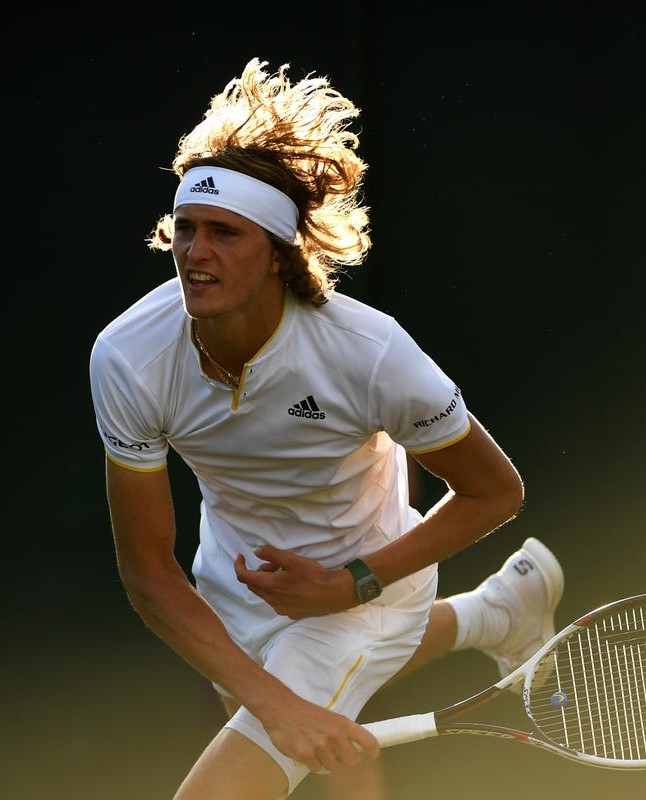


Tennis icon Roger Federer has now achieved the rare distinction of becoming a billionaire, placing him among a select few athletes to reach this financial milestone.
While his illustrious 24-year playing career, which concluded in 2022, saw him accumulate $130.6 million in prize money through 20 Grand Slam victories between 2003 and 2018, the predominant portion of his vast wealth has been derived from substantial sponsorship agreements and a strategic investment in a Swiss sneaker company.
According to the Bloomberg Billionaires Index, Federer’s net worth stands at approximately $1.3 billion, positioning him alongside other sports legends.
For context, Michael Jordan’s wealth was estimated at $3.5 billion following the sale of his stake in the Charlotte Hornets in 2023, and Tiger Woods’ net worth was calculated at about $1.36 billion last year by Bloomberg.
The power of endorsements and strategic investments
Sources close to Federer, who spoke on condition of anonymity, indicate his net worth is considerably above $1 billion.
Bloomberg’s valuation methodology incorporates Federer’s career earnings, investment returns, and endorsement deals, adjusted for prevailing Swiss tax rates and market performance.
A significant aspect of Federer’s enduring financial success lies in the longevity of many of his commercial partnerships.
He has maintained multi-decade relationships with prominent brands such as Credit Suisse Bank (now UBS Group AG), luxury watchmaker Rolex, and Swiss chocolatier Chocoladefabriken Lindt & Sprungli AG.
Beyond individual deals, Federer has meticulously cultivated a robust advisory network.
This includes Team8, the management company he co-founded in 2013 with his long-time agent Tony Godsick, as well as the Swiss firm Format A AG, which assists in managing various investments and his charitable foundation.
Sports analyst Bob Dorfman commented on Federer’s market appeal, noting, “Federer is totally scandal-free. He never says the wrong thing… But in terms of marketability, he’s been one of tennis’s best.”
A lucrative transition and an accidental windfall
Interestingly, some of Federer’s most financially significant deals materialized towards the latter stages of his playing career.
A notable example is his long-standing contract with Nike Inc., originally signed in 1996, which came up for renewal around 2018.
As tennis was not a primary focus for Nike, Godsick explored alternative partners.
This led to a substantial 10-year, $300 million offer from Uniqlo, a brand owned by Japan’s Fast Retailing Co., to become one of their flagship sports icons.
This agreement was particularly advantageous given Federer was 37 and nearing retirement; the deal included no obligations, even if he ceased playing, making it a highly attractive proposition.
However, even more impactful than his Uniqlo deal was an investment stemming from an unexpected introduction.
Federer’s wife inadvertently initiated the connection by purchasing a pair of sneakers from the emerging Swiss brand On.
Founded in 2010, On had gained recognition for its high-end jogging shoes featuring a distinctive sole, a design that originated from co-founder Olivier Bernhard’s prototype involving garden hose offcuts taped to his trainers.
Since Uniqlo does not produce footwear, Federer was free to pursue a shoe sponsor.
A self-professed sneaker enthusiast with a collection exceeding 250 pairs (excluding those used for playing), Federer initiated a meeting with On’s founders in Zurich.
Godsick also had a pre-existing connection, having made an angel investment in the company.
This led to a deal where Federer acquired an approximate 3% stake in On Holding AG and contributed to shoe design.
On is now valued at nearly $17 billion, which, according to Bloomberg’s wealth index, makes Federer’s stake worth at least $500 million.
Federer has, to date, avoided overexposure through extensive commentary roles or questionable sponsorships.
His recent public engagements include waving the French flag to commence the Le Mans endurance car race and launching a new Uniqlo clothing collection in Paris.
He is also expected to attend Wimbledon, the site of many of his greatest triumphs, when the tournament begins next week.
NIL
Grassroots Sports and the New Marketing Playbook
For decades, Indian sports marketing has been dominated by a familiar formula- big names, bigger stadiums, and astronomical sponsorship deals. Cricket, of course, sat at the centre of it all. If you were a brand looking to be seen, you found your way to an IPL team jersey or a primetime TV slot. But beneath […]
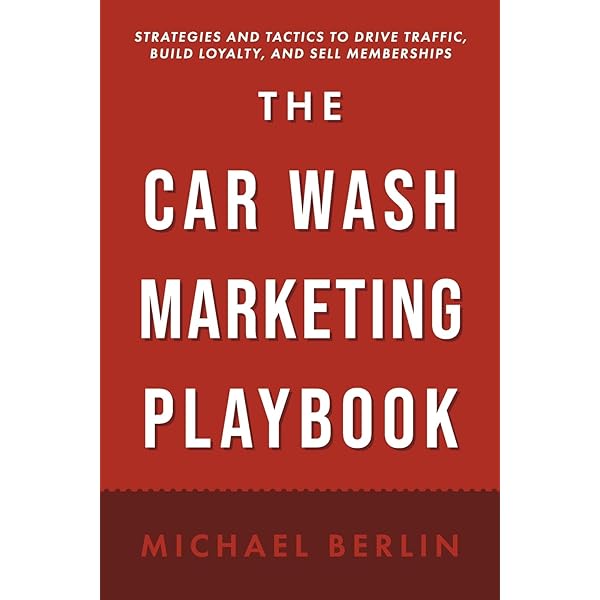

For decades, Indian sports marketing has been dominated by a familiar formula- big names, bigger stadiums, and astronomical sponsorship deals. Cricket, of course, sat at the centre of it all. If you were a brand looking to be seen, you found your way to an IPL team jersey or a primetime TV slot. But beneath this glitzy surface, a quieter movement has been gaining ground; grassroots sports, once seen as the less privileged cousin of professional leagues, are fast becoming the new playground for marketers looking to build real, lasting connections.



ADVERTISEMENT
How This Shift is Beyond CSR
Supporting local sports is no longer a token CSR initiative; it’s emerging as a smart, scalable strategy for long-term brand building. What began as a way to “give back” is now a calculated investment, as hyperlocal tournaments in football, kabaddi, athletics, and kho-kho start drawing dedicated audiences through digital platforms.
A report by GroupM ESP notes that non-cricket sports sponsorships in India crossed ₹2,000 crore in 2023, a sign of growing diversification in the sports marketing mix. And while elite leagues like the Pro Kabaddi League and ISL are gaining ground, it’s the raw, unpolished, deeply rooted appeal of grassroots competitions that brands are beginning to chase. Take Hero MotoCorp, for example. Beyond its involvement in the Indian Super League (ISL), the brand has actively backed school-level and regional football tournaments through its partnership in the Mission XI Million initiative, which reached over 11 million kids across the country.
Tech Meets Turf
The real game-changer driving this shift has been technology. Remote production, affordable live-streaming setups, and smartphone penetration have democratised visibility. A district kabaddi final can now be broadcasted on YouTube, while school-level cricket matches trend locally on Instagram reels. Moreover, there are special streaming platforms for lesser-known sports and youth competitions, helping overcome this visibility gap. What was once out of sight, and therefore out of mind for marketers, is now being watched, shared, and talked about in real-time.
The Social Currency of the Athlete-Creator
In small towns across India, young athletes double up as content creators, capturing behind-the-scenes footage, workout routines, and match highlights on social media. These aren’t polished influencers with brand managers; they’re relatable, self-made local heroes, and their influence is both personal and powerful. For marketers, that translates to an opportunity to build brand loyalty through authentic, user-generated narratives.
Smaller Budgets, Bigger Impact
A single IPL team sponsorship can run upwards of ₹100 crore. In contrast, sponsoring multiple district tournaments, installing turf grounds, or equipping a local girls’ football team might cost under ₹10 lakh, but it builds brand equity at a grassroots level, where recall and gratitude run deep.
It’s not just about spending, it’s about staying power. A logo on a jersey worn proudly in a village tournament, a water station at a school athletics meet, or travel support for a promising kabaddi player builds associations that last far longer than a 30-second TV ad.
Perhaps the most underrated strength of grassroots sports is emotional proximity. In small-town India, a local player’s win is the community’s win. The cheers are louder, the pride is personal, and the memories linger. Brands that embed themselves in this ecosystem are remembered and not just seen.
As India’s sporting landscape diversifies and digitises, the marketing spotlight is moving away from stadiums and screens, and towards school playgrounds, community fields, and neighbourhood leagues. The future of sports marketing in India won’t be built on celebrity alone; it will be built on connection.
(Views are personal)
-

 Motorsports2 weeks ago
Motorsports2 weeks agoNASCAR Weekend Preview: Autódromo Hermanos Rodríguez
-

 Motorsports3 weeks ago
Motorsports3 weeks agoNASCAR Through the Gears: Denny Hamlin has gas, a border needs crossing, and yes, that’s a Hemi
-
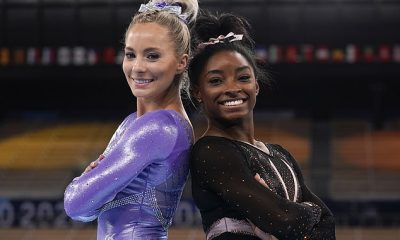
 Health2 weeks ago
Health2 weeks agoGymnast MyKayla Skinner Claims Simone Biles 'Belittled and Ostracized' Her amid Riley …
-

 High School Sports3 weeks ago
High School Sports3 weeks agoHighlights of the Tony Awards
-

 Motorsports2 weeks ago
Motorsports2 weeks agoNASCAR Race Today: Mexico City start times, schedule and how to watch live on TV
-
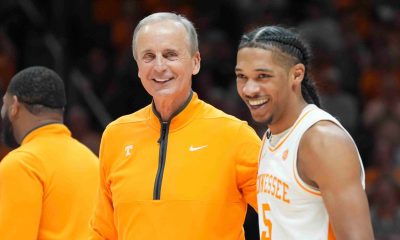
 NIL3 weeks ago
NIL3 weeks agoTennessee law supersedes NCAA eligibility rule
-
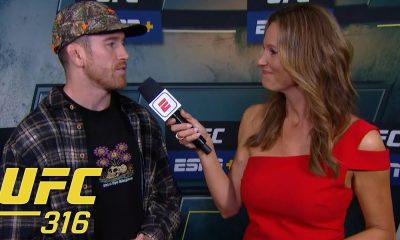
 Professional Sports3 weeks ago
Professional Sports3 weeks agoUFC 316
-

 Sports3 weeks ago
Sports3 weeks agoCoco Gauff, The World's Highest
-

 College Sports3 weeks ago
College Sports3 weeks agoFisk to discontinue history-making gymnastics program after 2026 | Area colleges
-
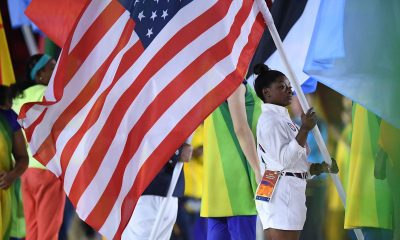
 Health3 weeks ago
Health3 weeks agoOlympic great Simone Biles shares mental health journey on first Hong Kong visit


































